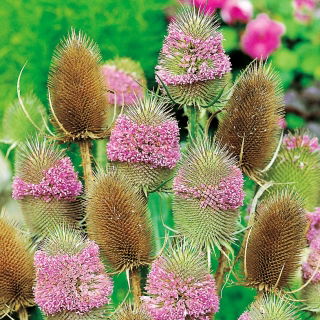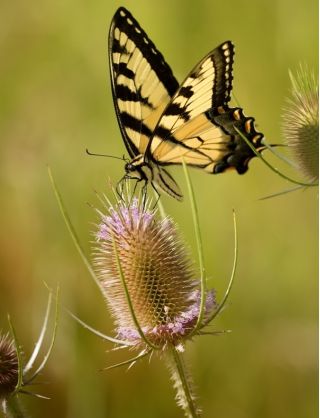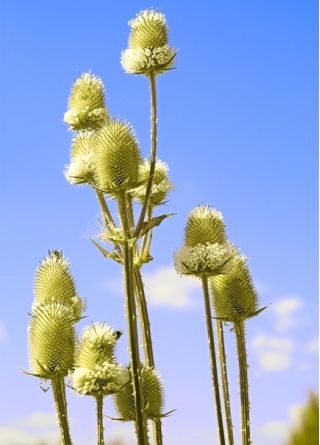- US Dollars ($)
- Euro (€)
- GB Pound (£)
- Chinese Yuan (元)
- Swedish krona (kr)
- Russian ruble (₽)
- Hong Kong dollar (HK$)
- Norwegian krone (kr)
- Indian rupee (₹)
- New Taiwan dollar (NT$)
- Danish krone (kr)
- Hungarian forint (Ft)
- Saudi riyal (SR)
- Bulgarian lev (лв)
- Czech koruna (Kč)
- Israeli shekel (₪)
- Indonesian rupiah (Rp)
- Japanese yen (¥)
- Korean won (₩)
- Malaysian ringgit (RM)
- Romanian leu (leu)
- Swiss franc (Fr.)
- Serbian dinar (din)
- Vietnamese đồng (₫)
- Ukrainian hryvnia (₴)
- Turkish lira (₺)
- Thai baht (฿)
- CAD Dollars ($)
- English
- German - Deutsch
- French - Français
- Spanish - Español
- Italian - Italiano
- Swedish - Svenska
- Russian - Русский
- Norwegian - Norsk
- Danish - Dansk
- Nederlands
- Estonian - Eesti keel
- Finnish - Suomalainen
- Hungarian - Magyar
- Latvian - Latviešu valoda
- Lithuanian - Lietuvių
- Portuguese - Português
- Chinese - 中文
- العربية - Arab-c
- Bulgarian - български
- Czech - Čeština
- Greek - Ελληνικά
- پارسی - Persian
- עברית - Abrit
- Croatian - Hrvatski
- Indonesian - Bahasa Indonesia
- Japan - 日本語
- Korean - 한국어
- Malay - Melayu
- Romanian - Română
- Slovak - Slovák
- Slovenian - Slovenščina
- Serbian - Српски
- Thai - ไทย
- Turkish - Türkçe
- Ukrainian - Українська
- Vietnamese - Tiếng Việt
- Hindi - हिंदी
- Categories
-
Seeds
-
Vegetable Seeds
-
Flower Seeds
-
- Ageratum, Flossflower seeds
- Alyssum seeds
- Amaranth Seeds
- Aquilegia, Columbine seeds
- Aster seeds
- Aubrieta Seeds
- Begonia seeds
- Bellis perennis, Daisy seeds
- Californian Poppy Seeds
- Campanula, Bellflower seeds
- Celosia, Cocksbomb seeds
- Centaurea, Cornflower seeds
- Chrysanthemum, Painted Daisy seeds
- Coleus seeds
- Convolvulus seeds
- Coreopsis seeds
- Cosmos seeds
-
- Datura seeds
- Dianthus, Carnation seeds
- Echinacea, Coneflower seeds
- Flower seed mixtures
- Forget me not seeds
- Foxglove seeds
- Gaillardia Seeds
- Gazania seeds
- Geranium, Pelargonium seeds
- Godetia seeds
- Gourd, Ornamental squash seeds
- Gypsophila, Baby's Breath seeds
- Hollyhock seeds
- Impatiens seeds
- Ipomoea, Morning glory seeds
- Calabash, Bottle Gourd seeds
- Larkspur, Delphinium seeds
-
- Limonium, Statice seeds
- Lobelia seeds
- Lupin, Lupine seeds
- Lychnis, Catchfly seeds
- Mallow Seeds
- Marigold, Tagetes seeds
- Milkweed Seeds
- Nasturtium seeds
- Nemesia seeds
- Nepeta, catmint seeds
- Nicotiana, Ornamental Tobacco seeds
- Nigella, Love in a mist seeds
- Pansy seeds
- Petunia and Surfinia seeds
- Phlox seeds
- Poppy seeds
- Primula, Primrose seeds
-
- Red Valerian, Centranthus Seeds
- Ricinus, Castor bean seeds
- Runner bean seeds
- Safflower seeds
- Salvia, Ornamental sage seeds
- Snapdragon Seeds
- Stock seeds
- Strawflower, Golden everlasting seeds
- Sunflower seeds
- Sweet pea seeds
- Tunbergia, Black-eyed Susan Vine seeds
- Verbascum, Mullein seeds
- Verbena seeds
- Veronica, Speedwell seeds
- Viola, Violet seeds
- Zinnia seeds
-
- Herb Seeds
- Sprouting Seeds
-
Flower Bulbs
-
- Lily of the Incas seedlings, Alstroemeria
- Lily of the Nile seedlings, Agapanthus
- Hollyhocks seedlings, Alcea
- Alum root seedlings, Heuchera
- Anemone bulbs
- Columbine seedlings, Aquilegia
- Arum bulbs
- Astilbe seedlings
- Athyrium
- Begonia bulbs
- Bergenia seedlings
- Canna lily rhizomes
- Lily of the valley rhizomes, Convallaria
-
- Montbretia bulbs, Crocosmia
- Cyclamen bulbs
- Dahlia tubers
- Bleeding heart seedlings, Dicentra
- Coneflower seedlings, Echinacea
- Freesia bulbs
- Galtonia bulbs
- Gladiolus bulbs
- Glory Lily seedlings, Gloriosa
- Daylily seedlings, Hemerocallis
- Plantain Lily rhizomes, Hosta
- Iris bulbs and seedlings
- Peruvian daffodil bulbs, Ismene
-
- Ixia bulbs
- Tritoma seedlings, Kniphofia
- Gayfeather bulbs, Liatris
- Lily bulbs, Lilium
- Lupin seedlings, Lupinus
- Ornamental grass seedlings
- Star of Bethlehem bulbs, Ornithogalum
- Oxalis bulbs
- Peony rhizomes, Paeonia
- Poppy seedlings, Papaver
- Pasque flower seedlings, Pulsatilla
- Phlox seedlings
- Tuberose bulbs, Polianthes
-
-
Garden Equipment
-
At home
- Around home
-
Fertilizers
-
- All-purpose fertilizers
- Autumn and winter fertilizers
- Blueberry fertilizers
- Boxwood fertilizers
- Bulb plants' fertilizers
- Grass and lawn fertilizers
- Citrus plant fertilizers
- Compost
- Conifer fertilizers
- Dolomite and lime fertilizers
- Dry powder fertilizers
- Fertilizers for balcony and terrace plants
- Fertilizers for moss-infected lawns
- Fertilizers in pump sprayers
-
- Fertilizers in watering cans
- Fertilizers sticks
- Fertilizers with leaf shine
- Flowering plant fertilizers
- Fruit fertilizers
- Fruit tree fertilizers
- Garden plant fertilizers
- Gel fertilizers
- Geranium fertilizers
- Green plant fertilizers
- Herb fertilizers
- Home plant fertilizers
- Hydrangea fertilizers
- Lavender fertilizers
-
Teasel (Dipsacus sativus) is a remarkable plant that has found its place in many gardens due to its impressive height, reaching up to 150 cm, and its distinctive flowers gathered in oval heads. As a biennial plant, it is an excellent choice for enthusiasts of natural compositions. Its rigid, spiny stems add unique charm, while its nectar-rich nature attracts beneficial insects to the garden. Beyond its aesthetic appeal, teasel is perfect for flower beds and meadow gardens. Its thorny seed heads make an excellent material for creating dried arrangements that delight throughout the year.
Sowing
The detailed sowing process for teasel seeds is crucial for yielding healthy and impressive plants. The seeds should be evenly distributed, ensuring they have sufficient space to grow. This allows the plants to develop fully and showcase their potential.
Sowing Depth
The optimal sowing depth for teasel seeds is 0.5 cm. This depth ensures the seeds receive adequate moisture and warmth, promoting rapid germination. Seeds sown too shallowly may be vulnerable to adverse weather, while overly deep sowing can hinder young shoots from emerging through the soil.
Direct Sowing Period
When is the best time to sow teasel seeds directly into the ground? The optimal period is June and July. Sowing during this time provides favourable temperature and moisture conditions, which facilitate rapid plant development. It's advisable to choose dry days to prevent seed washout.
Plant Spacing
For teasel to develop properly, a spacing of 40x50 cm between plants is recommended. This distance ensures adequate air circulation and light access, which are crucial for healthy growth. Plants placed too closely may suffer from insufficient resources, negatively affecting their development.
Site Conditions
Teasel prefers sunny locations where it can absorb maximum energy from the sun. The soil should be fertile, well-drained, and moderately moist. Avoid waterlogged areas where excess water can lead to root rot. The plants thrive best in neutral pH soil, promoting healthy growth and abundant flowering.
Growing Tips
Growing teasel is not complicated, but it requires some attention. Regular watering, especially during dry periods, is key to maintaining the plant in good condition. It's also beneficial to protect the plants from strong winds, which can damage their tall stems. Regularly removing spent flowers encourages further blooming and maintains the plant's aesthetic appearance.
Plant Height
Teasel reaches an impressive height of 120 to 150 cm, making it an excellent choice for creating taller layers in garden compositions. Its majestic height adds natural charm and harmony to the garden.
Flowering Period
The flowering period for teasel spans from June to September. During this time, the plants display their beautiful, spiny flowers, which are a true adornment to any garden.
Usage
Teasel is an excellent decorative element for flower beds and meadow gardens. Its spiny seed heads are often used in dry floral arrangements. Additionally, as a nectar-rich plant, it attracts bees and other pollinators to the garden, supporting the garden's ecosystem.
Resistance to Diseases
Teasel demonstrates substantial resistance to most plant diseases, making it easy to cultivate and low-maintenance in terms of chemical protection. This makes it an ideal choice for those who prefer natural gardening methods.
Good to Know
Teasel not only beautifies the garden but also plays an important ecological role. Its flowers attract pollinating insects, and its seeds provide a food source for birds during winter. Growing teasel is about aesthetics and supporting biodiversity.
Why Buy from Garden Seeds Market?
Garden Seeds Market offers high-quality seeds that have undergone thorough laboratory testing, ensuring their excellent quality and high germination capacity. Satisfied customers praise us for fast delivery and robust packaging that protects seeds from damage. Premium seeds guarantee healthy and beautiful plants in your garden. With us, every cultivation becomes simpler and more effective.
The packet contains 1 g of seeds. The packaging includes information on cultivation guidelines and the sowing viability date.
New


My account
Store
Customer information
Information

© -2025 Gardenseedsmarket.












